Who knows what evil lurks in the hearts of men? A lot of heroes like these…
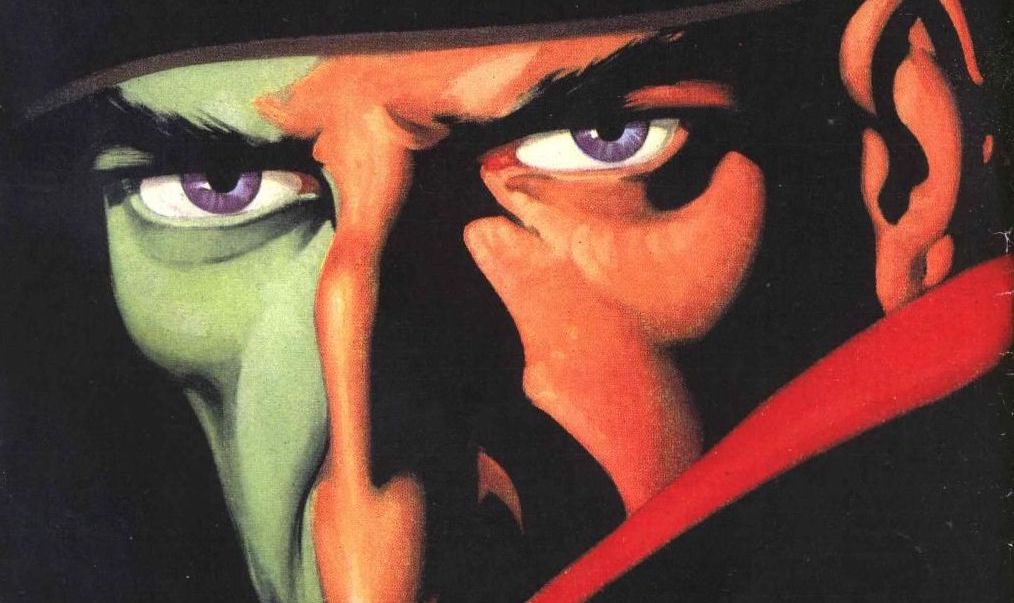
—
UPDATED 11/7/23: We’re feeling kinda pulpy today, so we’re “reprinting” this one from Nov. 2020. It’s a cool one. Plus, make sure you also check out IRV NOVICK’s GREATEST BATMAN PAGE, which happens to come from the Darknight Detective’s first meeting with the Shadow, and John K. Snyder’s fab 1939-style Batman illo that we’re showing off. Dig it. — Dan
—
If you dig comics and are at all learned about their origins, then you’re almost certainly a fan of the pulps — the cheap, lurid adventure stories of the early 20th century that thrill readers to this very day.
The pulps have never really gone away. They’ve just mutated — whether it be in modern paperbacks or anthologies or, yes, comic books.
In fact well-known comics creators such as Bob Greenberger, Ron Marz and 13th Dimension columnist Paul Kupperberg are keeping the flame alive with Crazy 8 Press’ Thrilling Adventure Yarns 2021, a second volume of their tributes to the pulps.
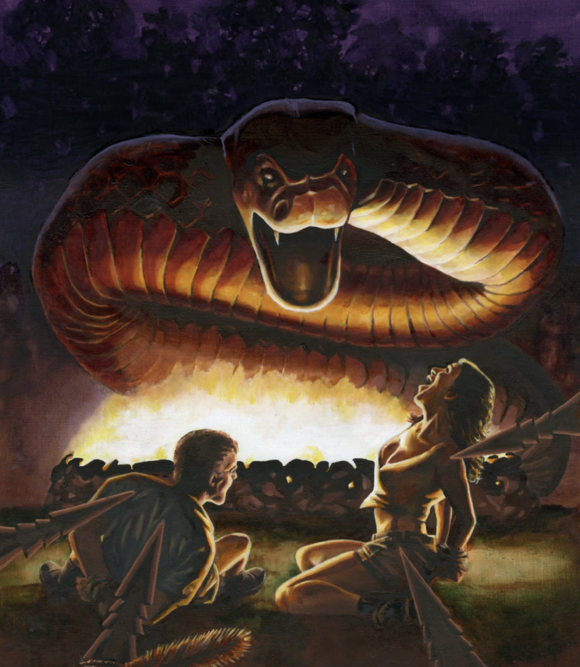
Thrilling Adventure Yarns 2021
Thrilling Adventure Yarns 2021 is being funded through Kickstarter and has hit its base goal, so you know this is on the way. Of course, now is the time to start diving into those stretch goals. (UPDATED 11/7/23: You can now buy the book here and the 2022 edition here.)
In any event, given Greenberger’s love of pulps and encyclopedic knowledge of comics, I’ve asked him to rank THE TOP 13 SUPERHEROES INSPIRED BY THE PULPS. Some are obvious. Some are not. All are cool.
Dig this:
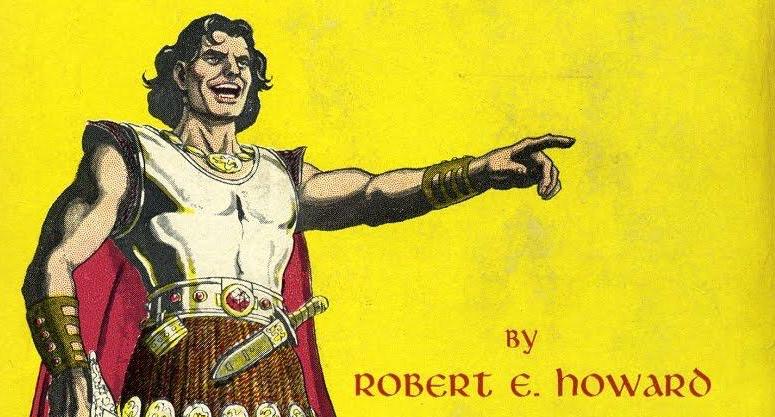
—
By ROBERT GREENBERGER
The pulp magazines were the popular culture of the early 20th century. Printed on cheap pulpwood paper (hence the name) there were magazines filled with fiction in every genre imaginable. An outgrowth of the penny dreadfuls and chapbooks of the 19th century, they were noted for their imaginative worlds and dense prose (often referred to purple prose). They were also the fertile ground where enduring characters made their debut, beginning with Edgar Ric Burroughs’ Tarzan and John Carter of Mars.
Many early comics writers and editors also got their professional starts there, including DC Comics’ Mort Weisinger, Jack Schiff, Edmond Hamilton, Alfred Bester and many more.
The pulps also provided the prototype characters that were imitated as comic books arrived in 1935 and soon overtook the pulps as the predominant category found on newsstands. Sometimes the debt is acknowledged, such as Batman meeting the Shadow, and other times it took others to make the connections.
I’m honoring the pulp era in my Thrilling Adventure Yarns, an anthology coming from Crazy 8 Press in 2021. As I prepared the Kickstarter campaign, live through Nov. 14, I was given the chance to think about the pulp/comics connection and this led to the following list of 13 comic book heroes inspired by the pulps.

—
13. Crom the Barbarian/Conan the Barbarian
Robert E. Howard was inspired by preceding pulp writers like Talbot Mundy and in the 1920s began writing stories to sell while working in a Texas drug store. As the 1930s dawned, Howard was writing full time and over the course of nine months, conceived of a barbarian named Conan, who trod the Hyborean Age and had amazing adventures. Although he also created King Kull and Solomon Kane, he is forever linked with the barbarian, thanks to the best-selling Lancer Books collections of his tales in the 1960s, which led to the Marvel Comics adaptation.
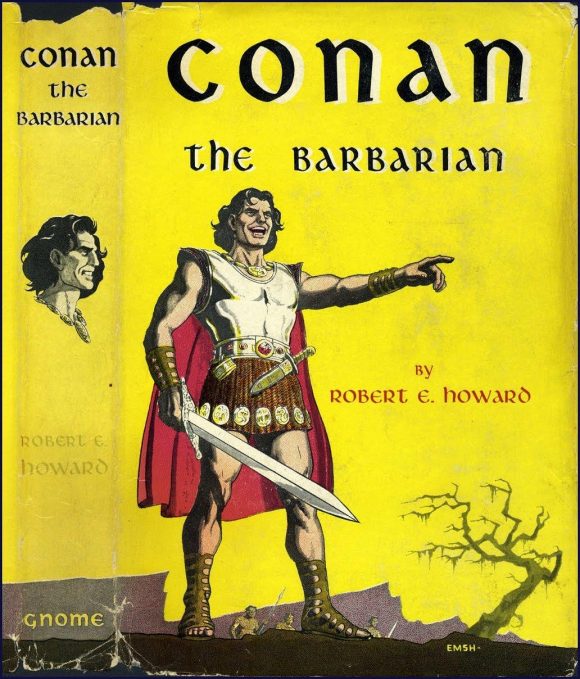
Where imitation is the sincerest form of flattery, Gardner Fox, who supplemented his income from writing a prolific number of comics for National and All-American, dabbled in fiction as well, selling to the pulps. In 1950, for Avon, he created Crom the Barbarian, clearly based on Conan, who worshipped the god Crom.
Crom first appeared in 1950’s Out of this World, a pulp that had a 32-page color comics insert, before migrating to Avon’s regular comic Strange Worlds. Art was by John Giunta, a journeyman comics artist, who once collaborated with Frank Frazetta, the painter who helped immortalize Conan for Lancer.

—
12. Blackhawk/G-8 and his Battle Aces
G-8 was an aviator during World War I, featured in his eponymous pulp from Popular Publications, beginning in 1933, lasting 110 issues. His alter ego was never revealed and he was aided by a trusty handful of men, closely modeled after Doc Savage’s Fabulous Five. While never as popular as other pulp heroes, G-8’s aerial adventures could be easily seen as influential on Will Eisner, when he created Blackhawk and his international team of flyers in 1940 for Quality Comics.
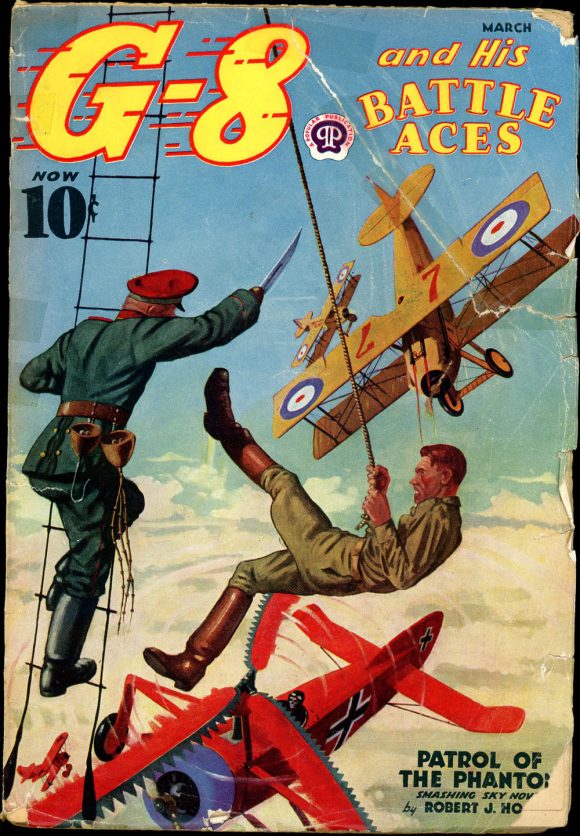
While the action was moved to World War II, the title character was established as Polish flyer Bart Hawk (later renamed by Howard Chaykin as Janos Prohaska). He proved far more popular and enduring than his inspiration — going so far as to earn a movie serial — and remained in print through 1968 with a never-ending series of revivals.
When pulp heroes were revised as paperback series, eight G-8 books were released in the 1970s with cover paintings by Jim Steranko, who was also handling The Shadow releases for Pyramid.
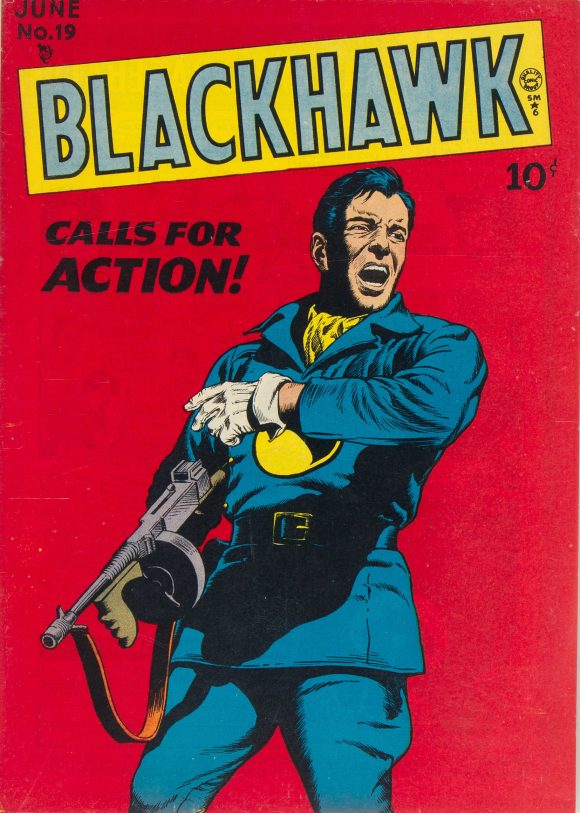
—
11. Sheena/Tarzan
This one may be a gender-bending stretch but hear me out. Edgar Rice Burroughs introduced the world to Lord John Greystoke, raised by apes in the African jungle in the pages of The All-Story in 1912. Tarzan went on to spawn two dozen sequels and launch a franchise that remains today. He was easily imitated throughout the pulps, including Martin Goodman’s Ka-Zar, who quickly migrated from pulps to comics in the 1940s and remains Tarzan’s closest comic-book analogue. But, before that migration took place, S. M. “Jerry” Iger drew inspiration for a new heroine — Sheena. The initial character designs were by a young Mort Meskin.
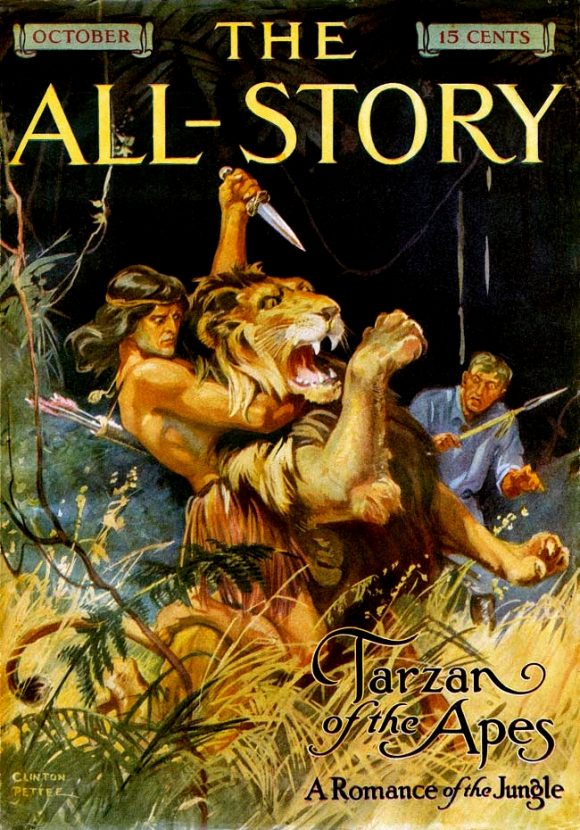
Interestingly, Sheena first appeared in the British Wags in January 1938 before arriving in the U.S. eight months later in Fiction House’s Jumbo Comics #1. Her popularity grew to the point where she received her own title, well before Wonder Woman received her book. Sheena endured until the 1950s and has been periodically revived, and even had her own bad film adaptation in the 1980s with Tanya Roberts in the title role. She is easily confused with Shanna the She-Devil, whose name Marvel clearly saw as an homage.
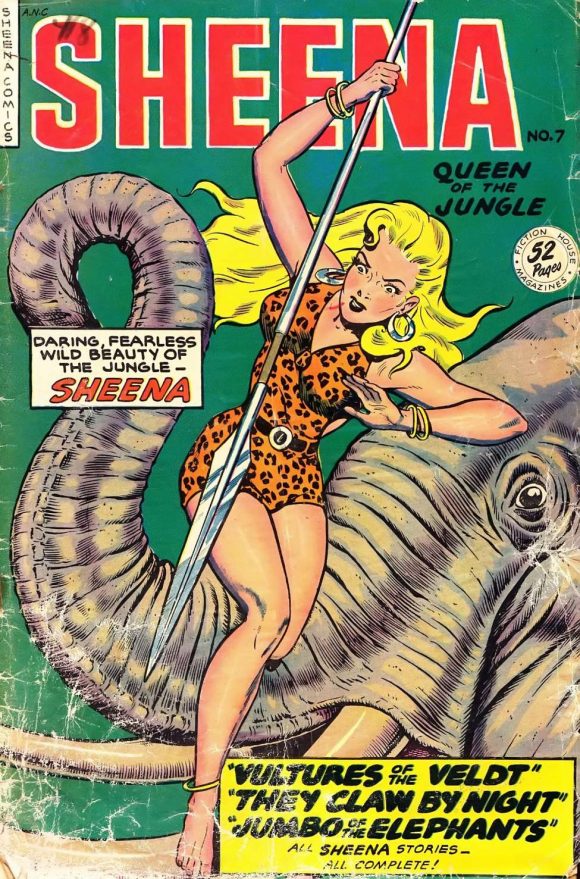
One could also say Sheena was partially inspired by Otis Adalbert Kline’s Jan of the Jungle stories.
—
10. Adam Strange/John Carter
Burroughs created many other enduring characters including the beloved John Carter of Mars. The Civil War veteran went to sleep in a cave and somehow awoke on Mars, where the lighter gravity gave him powers and abilities far beyond those of mortal men. Carter became a champion to the warlike races that populated the planet, fell in love with and married the princess Dejah Thoris, and sired children, creating the first half-breed heroes in pulp fiction. While not as popular as Tarzan, his exploits have endured and he did receive an underrated film adaptation that has become the stuff of legend.
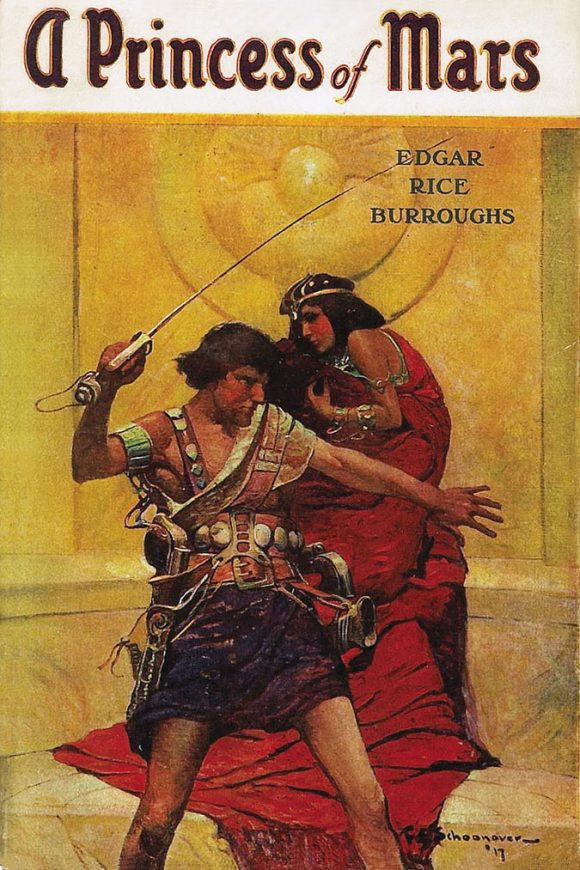
Meantime, Gardner Fox gave us archaeologist Adam Strange, who just happened to be in the right place at the right time when a Zeta Beam, travelling 25 trillion light years from the distant planet Rann, zapped him. Instantly, he was transported across the galaxy, where he aided the beam’s creator, Sardath, and his beautiful daughter Alanna. Just as the man and woman were to kiss, the beam’s radiation wore off and he was transported back to Earth. Ever since, he has calculated when the next beam would strike and he’d return to Alanna’s arms and invariably just in time to solve a mystery or save the world. Adam’s keen intellect and courageous valor proved the difference between victory and defeat on numerous occasions.
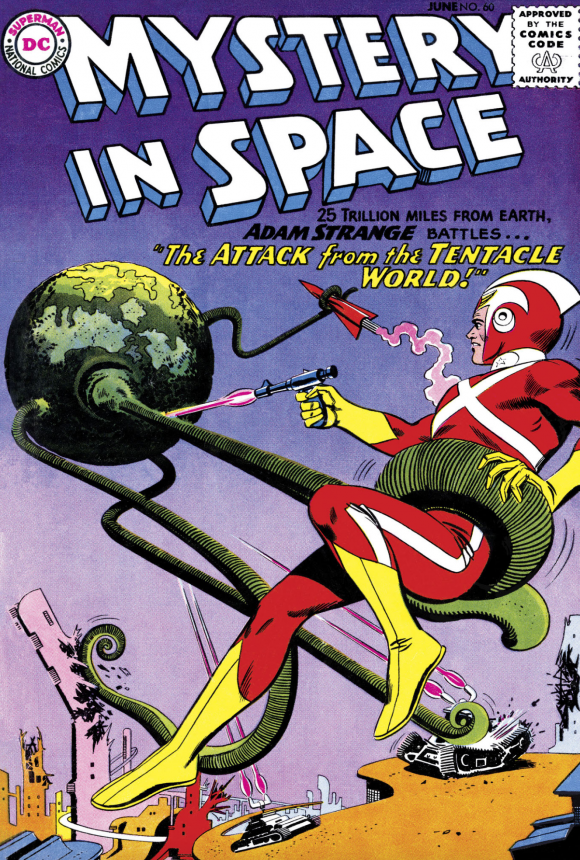
Beautifully illustrated by Carmine Infantino and Murphy Anderson, Strange anchored Mystery in Space for years and has become a perennial guest star across the DC Universe. He’s currently found in his own maxiseries from Tom King, Mitch Gerads and Doc Shaner.
—
9. Captain Comet/Captain Future
Mort Weisinger helped create Captain Future (said to occur during the first World Science Fiction Convention), which debuted in 1940 and was mainly written by Edmond Hamilton prior to his prolific comic-book career. The title character was an intergalactic adventurer in the future of 1990 and he and his pals fought the good fight for truth, justice and the galactic way.
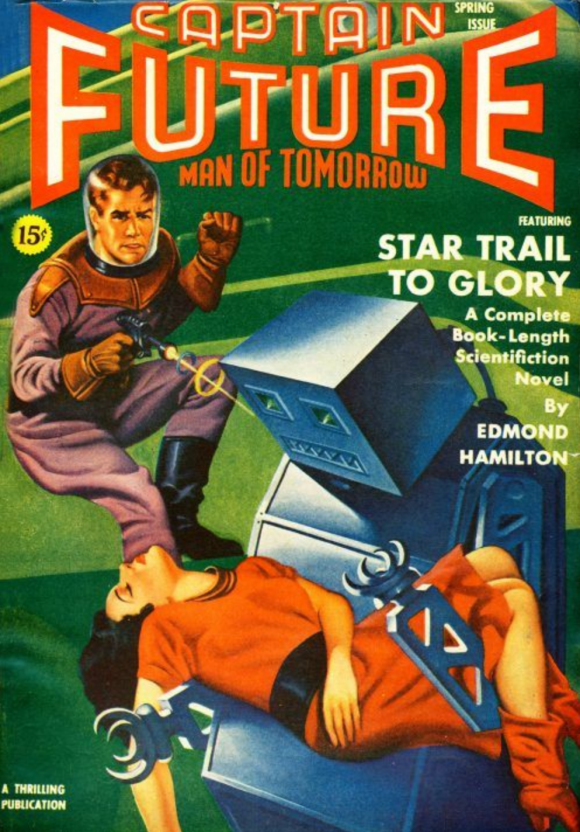
In 1951, Weisinger and Hamilton were both at DC, but it fell to Weisinger’s former partner Julius Schwartz to imitate the hero with Captain Comet. Co-created by writer John Broome, Adam Blake was earth’s first metahuman mutant, his powers activated when a comet flew across the American skies. Debuting in Strange Adventures #9, he was an interesting character, arriving in that narrow gap between the end of the Golden Age and the dawn of the Silver Age. Captain Comet faded from print in 1954, only to be revived in the 1970s and has intermittently been a part of the DC mythos ever since.
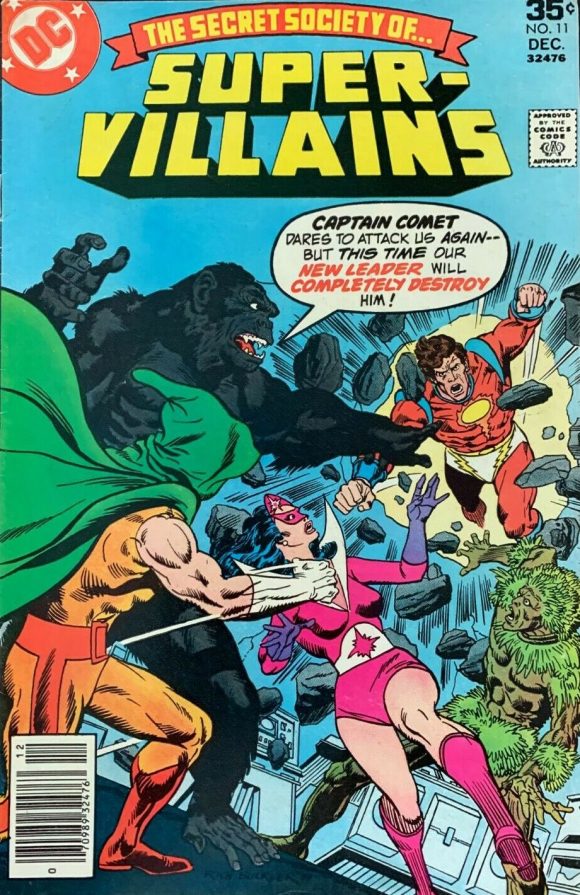
—
8. The Rocketeer/Commander Cody
This one is a stretch, I know, but bear with me. Dave Stevens created the Rocketeer as a backup feature in Mike Grell’s Starslayer for Pacific Comics. His lush style perfectly captured the pulp era, as seen through the eyes of Hollywood’s movie serials, which were frequently based on heroes like Tarzan, Zorro, the Shadow, Kioga, the Spider, Jan of the Jungle, and so forth. Republic Studio’s King of the Rocket Men, a 1949 serial, was actually an original.
When Dr. Vulcan threatens to kill the members of America’s Science Associates, they go into hiding. There, scientist Jeff King is given an atomic-powered backpack with a bullet-shaped helmet and is sent to stop the evil man. It’s said the production was inspired by Buck Rogers, which also began as a pulp story.
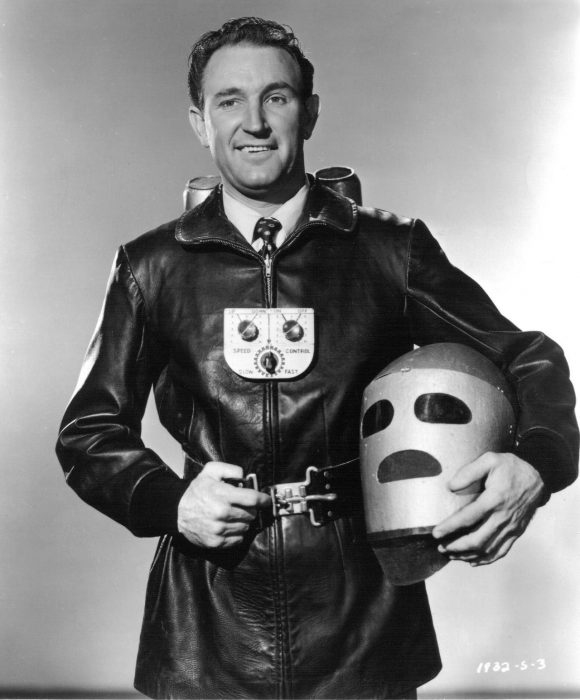
The success of Rocket Men led to a sort of sequel, Radar Men from the Moon, which introduced a similarly equipped hero named Commander Cody (and reused footage from the first serial). This worked well enough to spawn a sequel, Zombies from the Stratosphere, which featured a very young Leonard Nimoy. That was followed by Commando Cody: Sky Marshal of the Universe and eventually a rock band, Commander Cody and His Lost Planet Airmen, founded in 1967.
All of this proved incredibly influential on Stevens, who also included allusions to Doc Savage and the Shadow. The character and Stevens’ art led to many other appearances, reviving interest in model Bettie Page along the way, and became an underrated Disney film in 1991.
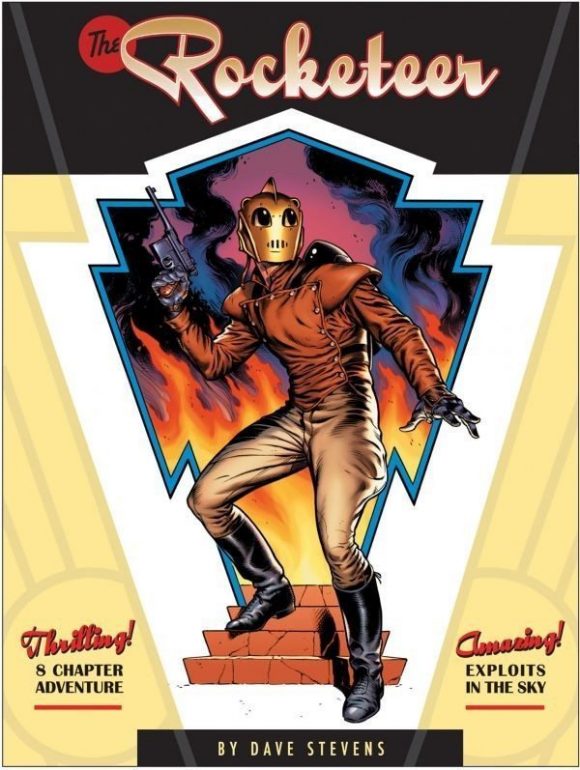
—
7. Nick Carter/Slam Bradley
The granddaddy of pulp heroes, Nick Carter punched his first bad guy in 1886, appearing in the dime novels of the day, the forerunner of the pulps. Created by Ormond G. Smith and John R. Coryell, he headlined his own weekly title after making his debut in the New York Weekly (Vol. 41, No. 46, September 18, 1886). These were breathless, serialized stories, later collected in book form and such was the model until sales dwindled and the title vanished in 1915. He was briefly revived in 1924 and again in 1933, cashing in on name recognition and the success of the Shadow and Doc Savage.
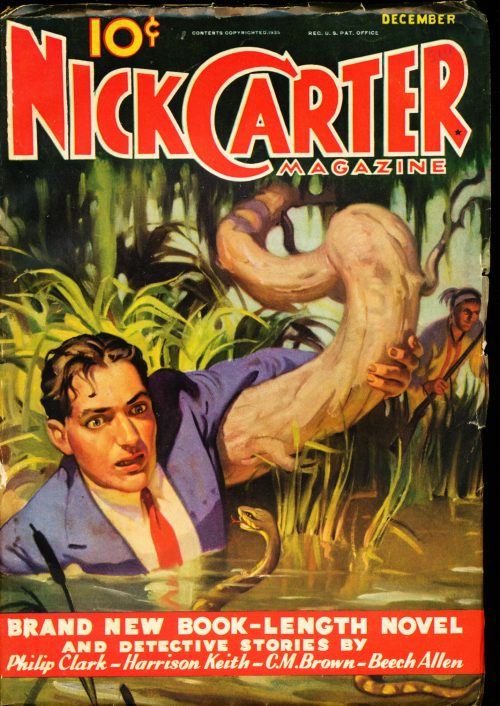
Initially, Carter’s background was similar to that of Clark Savage Jr., so when he was reintroduced, he was styled as a two-fisted, hardboiled private detective, a very popular genre of the day. In 1964, he was reimagined as a secret agent (thank you, James Bond) in a series subtitled Killmaster, which ran as a novel series through 1990.
It’s the hardboiled version that was likely read by Jerry Siegel so when Major Malcolm Wheeler-Nicholson suggested the idea of Slam Bradley, Siegel knew exactly how to execute it. He and Joe Shuster further developed the character, who debuted in Detective Comics #1, prior to their Superman sale. Bradley ran through 1949 before a series of revivals starting in 1981. Most recently, a descendent of his was introduced in Detective Comics #1001. The character even made an appearance on the CW’s Batwoman.
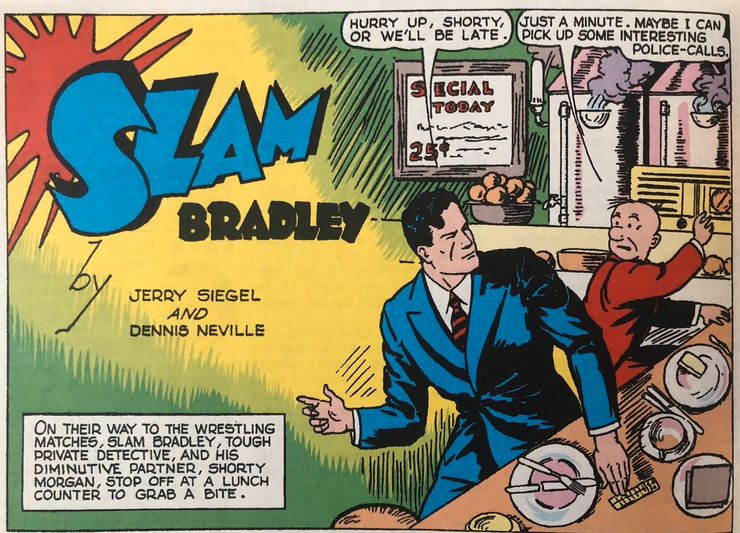
—
6. Daredevil/Black Bat
The Berryman Press had the Black Bat first, a short-lived pulp written by future SF grandmaster Murray Leinster. He wasn’t costumed, closer to Simon Templar/the Saint than a superhero.
The second Black Bat, though, was a Thrilling Publications hero, arriving in summer 1939. District Attorney Anthony Quinn was blinded and disfigured from acid so left his job and took up the cloaked crimefighter role of the Black Bat. As his predecessor the Spider did, he left calling cards — bat stickers — on his victims.
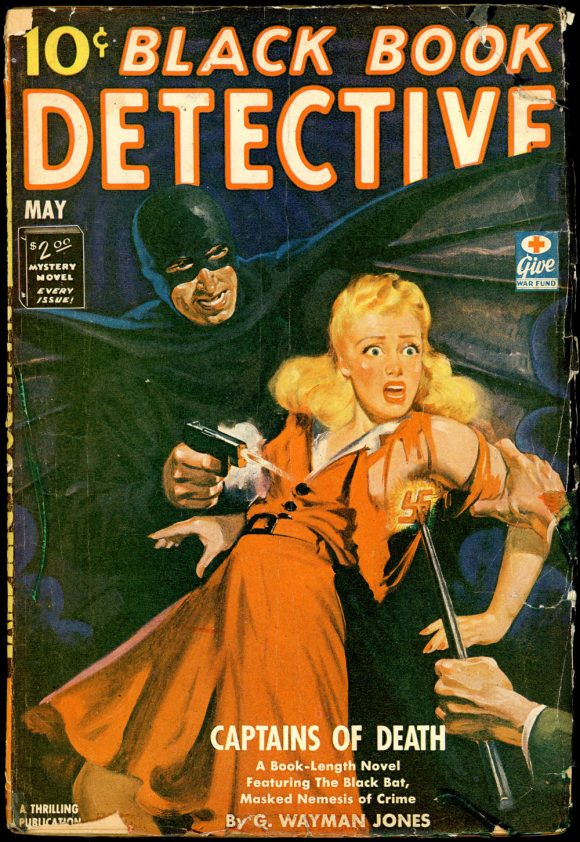
Ah ha! You might chortle. Why Daredevil and not Dr. Mid-Nite, the first blind superhero, who could see in the dark? Well, Dr. Charles McNider did lose his sight and fight crime as the costumed hero, complete with Hootie the owl as a sidekick.
But Quinn regained his sight through a mysterious cornea transplant that not only granted him vision in light and dark, but somehow enhanced his other senses, making him a closer match to Matt Murdock, created by Stan Lee and Bill Everett.
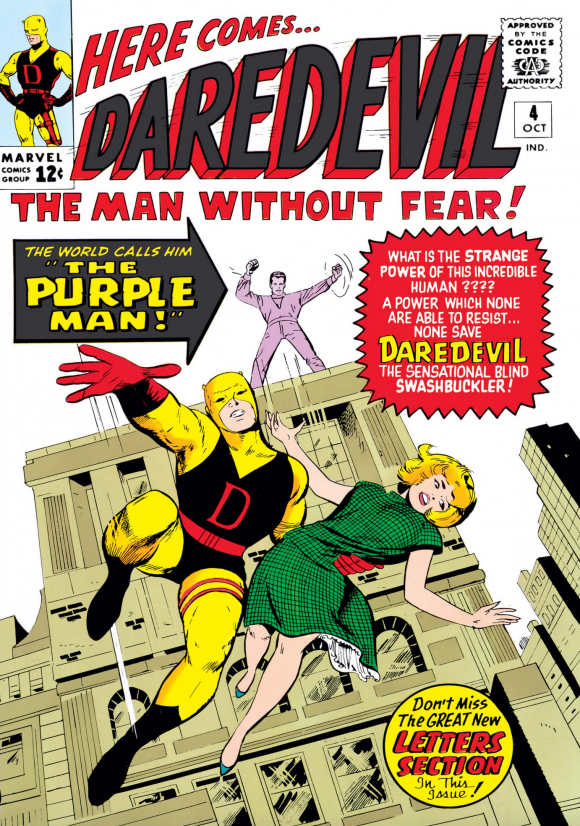
Murdock, as a teen, lost his sight when he saved a man from being hit by a truck, only to be splashed by its contents, radioactive waste. While it robbed him of sight, it granted him enhanced sensory powers. As he mastered them, his “radar sense” let him fight crime under the name Daredevil.
—
5. Challengers of the Unknown, Fantastic Four/Doc Savage’s Fabulous Five
As famous as Doc Savage was, he never failed to share credit with his aides, five accomplished men who journeyed with him around the world combatting evil in all its forms. Where the Shadow’s aides tended to stay undercover or unseen, these five were out and about. There was Monk Mayfair, the chemist; Ham Brooks, the lawyer; Renny Renwick, engineer; Long Tom Roberts, electrical engineer; and Johnny Littlejohn, archaeologist and geologist. They were distinctive and often kidded one another or outright feuded, especially Monk and Ham.
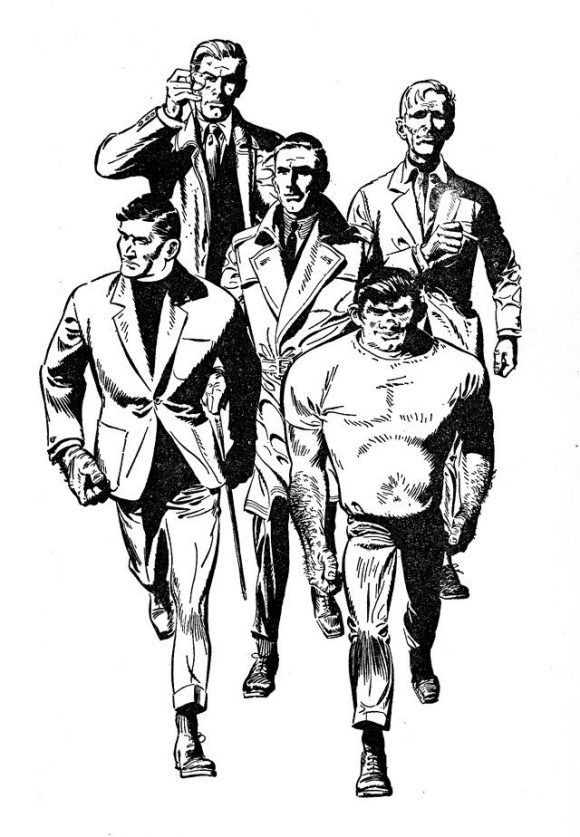
Some two decades later, the five could be seen as the templates for DC’s Challengers of the Unknown, a quartet of accomplished men — pilot Ace Morgan, scientist Prof Haley, wrestler Rocky Davis and stuntman Red Ryan — who survived certain death and used their “borrowed time” to make the world a safer place. They didn’t necessarily get along and their success is seen as a template for Marvel’s Fantastic Four, with the common denominator being Jack Kirby, who cocreated both series. In the FF’s case, they operated out of a New York City skyscraper, similar to Doc and his Fabulous Five working from the Empire State Building.
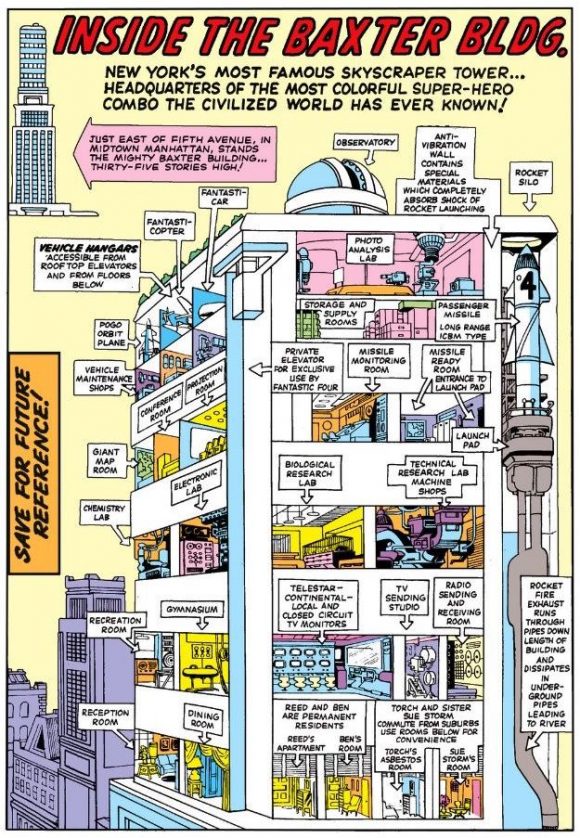
It should be noted that it wasn’t just Kirby bringing the pulps to comics. Stan Lee was a huge fan of The Spider magazine and read it from its first issue. It was not only a significant influence on his writing, but he cited its popularity in convincing a reluctant Martin Goodman to OK the first Spider-Man story being published. Like Spider-Man, the Spider operated outside of the law and his dramatic personal life was a major part of his storylines.
Lee was also a fan of Doc Savage, G-8 and his Battle Aces and other long-running pulps.
—
4. The Crimson Avenger/The Spider
Street & Smith was the most profitable and powerful publisher of magazines and pulps during the early 1900s. As a result, they had a radio program with stories from their mystery magazines, narrated by a voice known only as the Shadow. When people began asking news dealers for the Shadow magazine, S&S knew they had to deliver one. Maxwell Grant got tapped to create a character to go with the name and a hero was born.
The Shadow’s sales were so successful that it was one of the few titles to appear twice a month and the hero went on to star in movie serials, comic books and more. He also spawned a raft of imitators, the closest being the Spider.
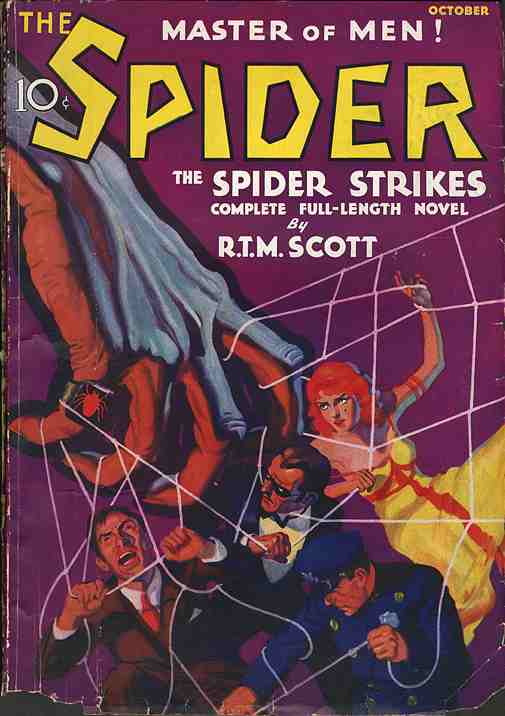
Created for Popular Publications by Harry Steeger, the Spider was secretly millionaire Richard Wentworth. Like the Shadow, he had a supporting cast of characters, a colorful lot.
The Spider’s black cloak was accented with red, linking him visually with the red shrouded Lee Walter Travis – the Crimson Avenger — who debuted in Detective Comics #20 in 1938, six months after Superman’s smash arrival, and just seven months before Batman arrived in the title. Visually, he may owe something to the Spider, but the rest of his creation owes far more to the radio series The Green Hornet.
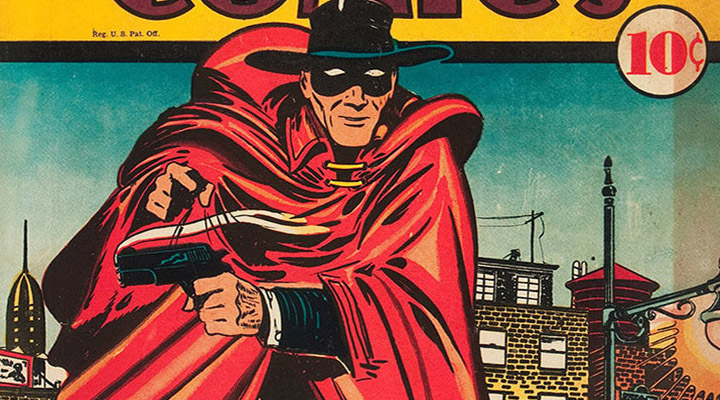
—
3. Superman/Doc Savage
Lester Dent created Clark Savage Jr. for Street & Smith, which gave him his own pulp in 1933. Nicknamed Doc, he was billed as the Man of Bronze, and through sheer training (and good genes), he perfected both mind and body. He was the epitome of human achievement, with a photographic memory, superior strength and endurance. Doc held multiple degrees and patents and traveled around the world with his colorful assortment of aides. As of the third issue, he was referred to as a superman.
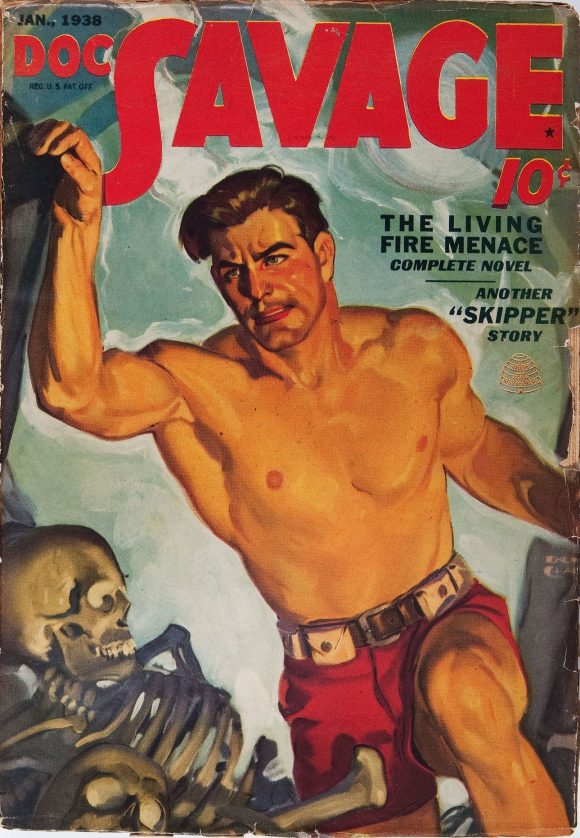
It is well known that Jerry Siegel and Joe Shuster both read the pulps, including Doc Savage and the earliest known sketches for Superman lifted the “man of steel” concept. If Doc Savage was the best of humanity, the duo took it one step further by making their hero an alien who was superior when influenced by Sol’s radiation and Earth’s lighter gravity (yes, they read John Carter too). Parallels to Doc Savage and Philip Wylie’s Gladiator are obvious but the boys from Cleveland managed to add just enough original elements to make him the archetypical superhero.
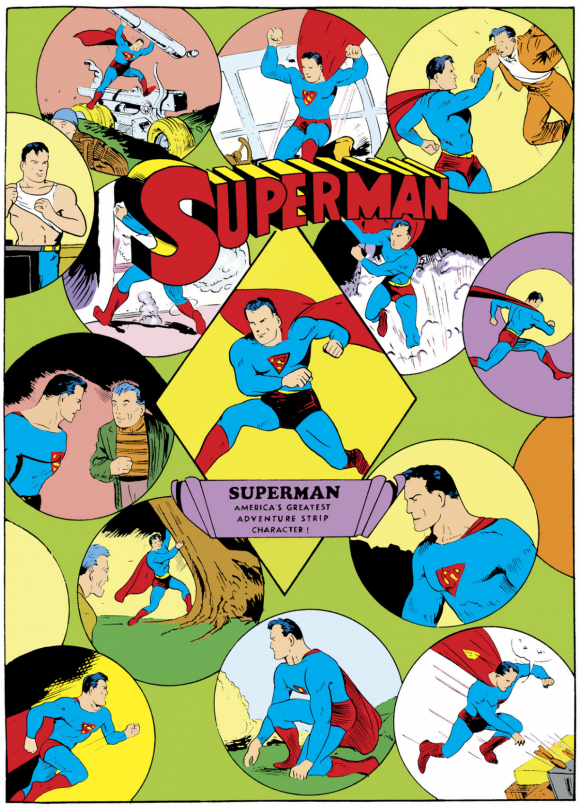
—
2. Green Lantern Corps/Lensmen
E.E. “Doc” Smith was a prolific science-fiction writer, whose works appeared throughout the pulp magazines. He created the Lensmen in a four-part story first appearing in Amazing Stories in 1934.
As a result of a brewing war between the Eddoans and the Arisians, the Galactic Patrol was formed and a superior weapon, the Lens, was first bestowed on Virgil Samms of “Tellus” (Earth). The Lensmen then waded into the intergalactic conflict across a series of books that placed second in the 1966 Hugo Award for Best Series.
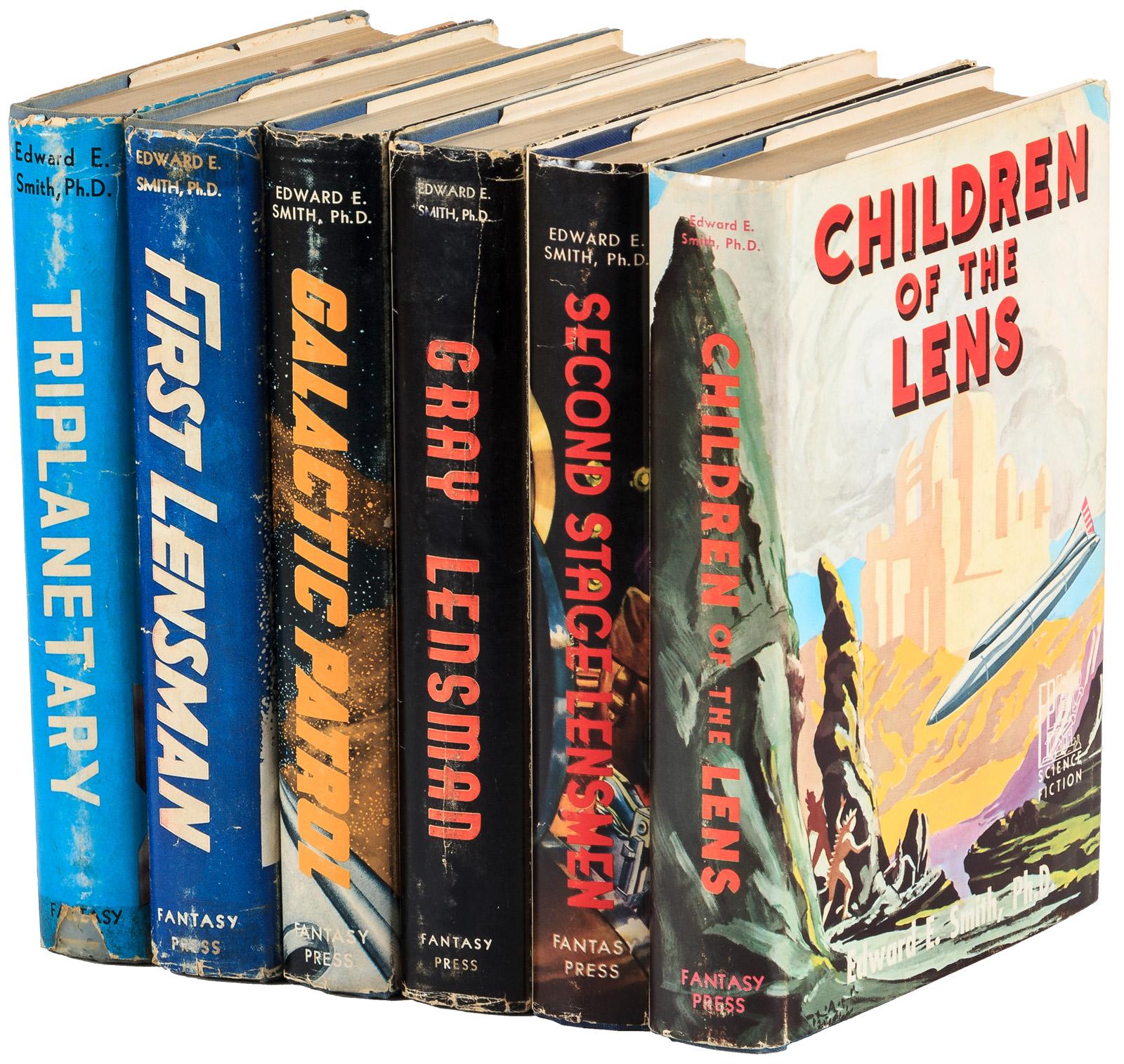
Smith was represented at one time by Julius Schwartz, who ran a literary agency with Mort Weisinger before Mort left for the pulps.
As legend has it, Schwartz was invited to work at All-American Comics and went on to become one of the most successful editors in comic book history. When he was tasked with reviving Green Lantern in the late 1950s, he and writer John Broome, who was steeped in the pulps, clearly borrowed elements from the Lensmen to create the intergalactic Green Lantern Corps, with power rings and the nigh omnipotent Guardians of the Universe.
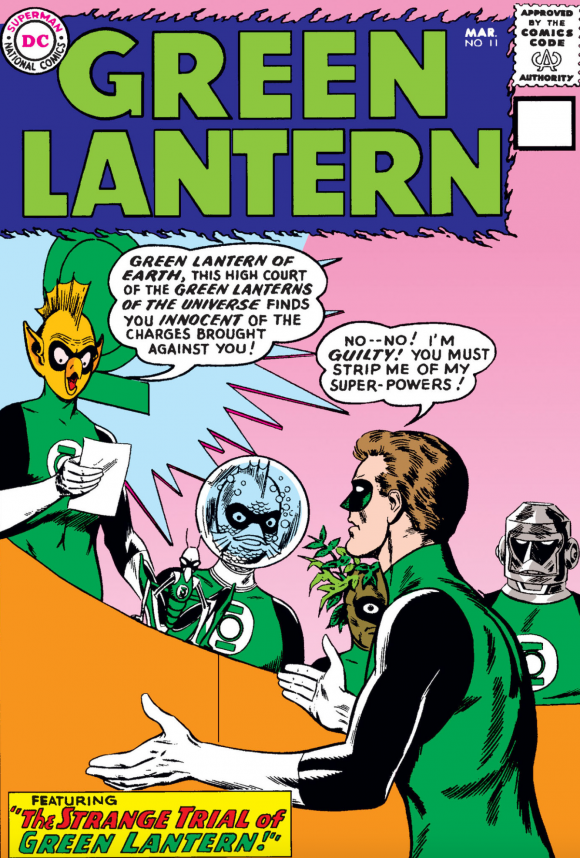
—
1. Batman/Shadow/Phantom Detective
This is without a doubt the clearest connection between pulps and comics. As stated above, Street & Smith’s Shadow was its best-selling character and could be found on every newsstand and heard weekly on the radio. Bob Kane and Bill Finger both admitted to reading his pulp exploits, so his DNA was definitely grafted on to the Caped Crusader.

Quickly, in the wake of the Shadow’s arrival, Ned Pines’ Standard Publishing had their own knockoff, The Phantom Detective, on the stands. The connection here is that in one story, the Phantom, as he was known, was summoned by a red beacon, installed by Frank Havens, the publisher of the Clarion newspaper.
Editing for Pines were Mort Weisinger and Jack Schiff so there’s little surprise that soon after joining National Comics, Batman had his Batsignal. (And these early pulp stories are said to have been an inspiration to Lee Falk, whose early Phantom strips closely resembled the setup.)
When DC Comics acquired the rights to Shadow in the ’70s, they quickly arranged for the inspiration to cross paths with the Dark Knight. Denny O’Neil cleverly wrote two stories where they met, in addition to his excellent work on the Shadow comic.
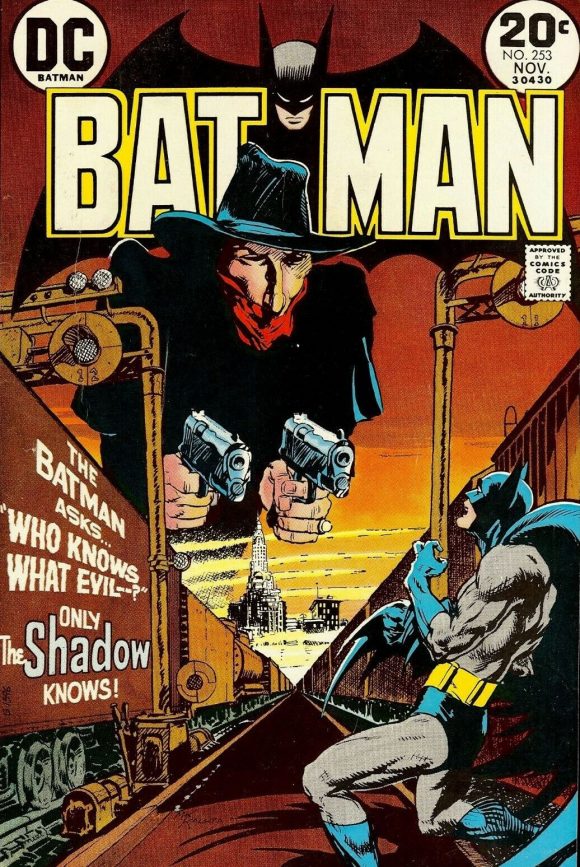
And yes, Batman’s origins have been revised to include that Bruce Wayne and his doomed parents had just seen The Mark of Zorro, a movie based on Johnston McCulley’s hero, who, like Tarzan, debuted in All-Story Weekly.
—
For more info on Thrilling Adventure Yarns 2021, click here.
***
By the way, I’m running this piece in tandem with a look at Irv Novick’s greatest Batman page. Why? Because it’s from a story starring Messrs. Wayne and Cranston. Click here to check it out. — Dan
—
MORE
— The Lurid Misfire That Was 1984’s SHEENA, QUEEN OF THE JUNGLE. Click here.
— The Curious Case of When SUPERMAN Met the ROCKETEER. Click here.

November 5, 2020
Otis Adelbert (not Adalbert) Kline. And let’s not forget that Gil Kane drew both the greatest Adam Strange and Green Lantern comics.
November 5, 2020
That Batman/Shadow cover is really interesting. 🙂
November 7, 2020
Dan Greenfield: Slam Bradley, Crom and Blackhawk are not superheros. Doc Savage is closer to Batman, than Superman.
November 8, 2020
maybe i’m nostalgic for Dave Stevens, having been young and buying comics weekly when he was in his prime, but the movie seemed to keep with his vision i think. great? no. worth seeing once at least, for sure.
i think by now Stevens would have eclipsed it (see what i did there?) and put out something in comics even more iconic, and we all know that would probably mean a movie or trilogy too these days.
November 7, 2023
Crom, Sheena, Blackhawk, Adam Strange, Slam Bradley, Crimson Avenger are not superheroes. Green Lantern has nothing to do with the Lensmen! He is an update of the original “magic ring” G.L., Rocketeer is serial character tribute
November 7, 2023
I think the clearest connection to the pulps for BAT-MAN was the rip of the Shadow story “Partners of Peril” which would become “The Case of the Chemical Syndicate”.
November 7, 2023
No, that is just story. It is not character influence.
November 7, 2023
I offered it as proof of the pulp’s influence on Bill Finger when he penned that first story in Detective Comics.
November 7, 2023
A strong article with strong choices. But surely The Phantom belonged in here somewhere.
November 7, 2023
Superman isn’t a bit like Doc Savage. Doc is a guy with Houdini’s skills, Einsteins brains and Hulk Hogan’s height. He can use his toes like fingers, sign, lip reader, fly a plane, invent gadgets, perform surgery. Superman? He can throw a car!
November 8, 2023
People who think Superman was like Doc Savage are aware that both had nicknames (the Man of Steel – Superman, the Man of Bronze – Doc), the both were called a superman, they both had hideouts in the Arctic Circle and they both named their hideouts The Fortress of Solitude. However, in the case of Superman, the writers purposely stole (oops, I mean they “paid homage”) to Doc by giving Superman many of the same attributes as Doc.
November 7, 2023
According to people who did the direct interviews with a Bill Finger, the shadow was much more of a prominent influence Batman then was the phantom detective.
Hence the storyline from Detective 27 being directly swiped from the Partners In Peril circa 1936 as I’m sure you’re aware of, through the research of Anthony Tollin.
November 8, 2023
A bit of a nitpick: Tarzan’s real name is properly John Clayton, Earl of Greystoke, or Lord Greystoke. Similarly, his wife, the former Jane Porter, is Jane Clayton, Countess of Greystoke, or Lady Greystoke. I would assume there is some cadet title that would be held by their son, Jack (“Korak”), until his father’s death.
Sorry, proper usage of British peerage titles is one of my bugbears.